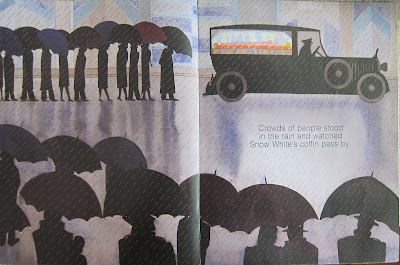Author: Bob Hartman
Illustrator: Tim Raglin
Brief Introduction:
There had a family of wolves in cave, the small wolf was tired of food his mother cook like lamburger, Sloopy Dose, Chocolate Moose, etc. He wants to eat a "boy." Therefore, he thought about an idea. On day, he cried out "BOY!" Then his parents were happy and rushed out, tried to caught the "boy," however, they could not found any, the food mother cooked was ruined, so they ate snack that night. The next day, the same situation, also snack for dinner. One day, his parents heard about his telephone conversation, he was show off his trick and going to keep playing this trick. His parents were angry, and decided to ignore him. However, the real "boy" appeared, even sitting in their living room, but this time, father and mother wolf would not trust him anymore.
Setting:
- Narrative Point of View: Omniscient Narrator
- Plot: Dramatic Plot
(Setting: There was a wolves family, and the boy was really tired of his mother's cook.The wolf boy thought about a idea.
Conflict: The wolf boy cried out "boy!" Then parents wolves was so happy and rushed out for found "the boy," but could not found him, and ruined the food mother cooked.
Rising Action: Day after day, the same situation keep happened. One day, the father heard about the wolf boy's telephone conversation, find that all of "boy!" are a trick, they decided ignore him.
Climax: The "real boy" came, but parents ignored him.
Denouement: The wold boy became clever, and did not object his mother's cook.)
- Conflict: Protagonist against Self (The wold boy becoming clever, because he found that how sad his parents ignored him.)
- Style: Exposition and Dialogue
- Tone: Didacticism
Reflection:
The cover picture use a lot of square, and use those square to make words, which looks like video game. It is the first point attract me. Second point is the typesetting, it is really cute to use picture in sentences.
In fact, I don't believe kid will be so clever after the ignore form their parents. But it is a good story to teach children not to lie.













